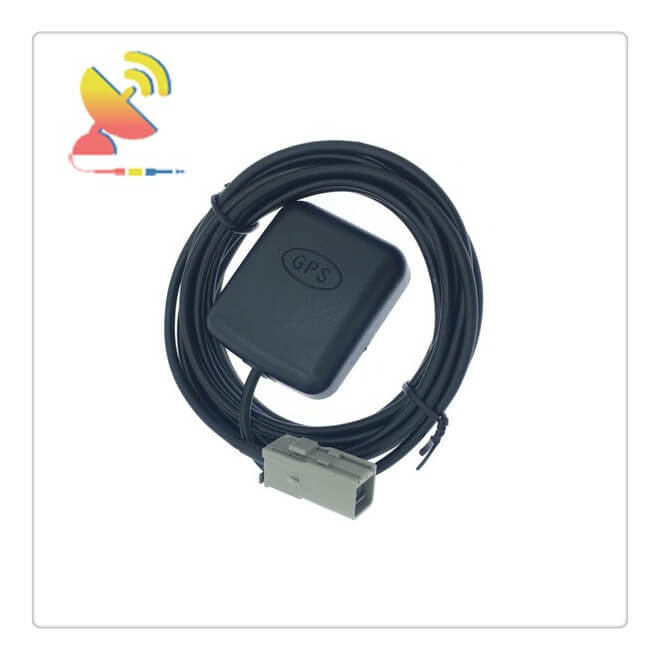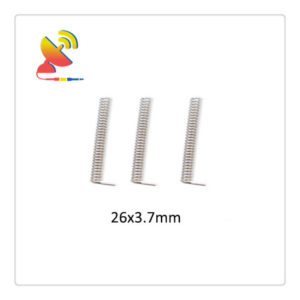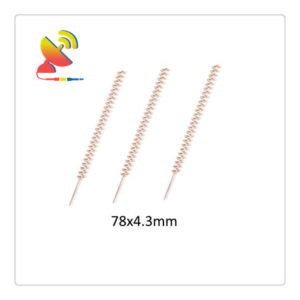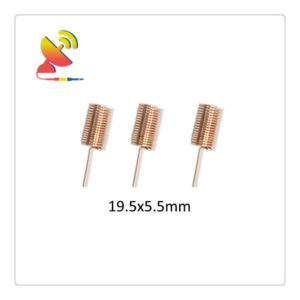Description
What is an External Active GPS Magnetic Mount Antenna?
This CTRF-ANTENNA-GPS-1575-4538-GT5-1S External Active GPS Magnetic Mount Antenna with GT5-1S Connector for vehicle location positioning antenna is manufactured by C&T RF Antennas Inc.
External Active GPS Magnetic Mount Antenna Features
Waterproof Active GPS antenna with GT5-1S connector
The magnetic base allows you to conveniently attach it to the roof of your car
28 dBi of gain with its built-in LNA
DC Voltage: 3V to 5V
The Global Positioning System (GPS) is a worldwide radio-navigation system formed from a constellation of 24 satellites that continuously orbit the Earth.
Each GPS satellite has onboarded several atomic clocks that are precisely synchronized to the Universal Time Coordinated (UTC) provided by the U.S. Naval Observatory (USNO). Coded signals are broadcast by each of the satellites with the exact time and position of the satellite.
All GPS receivers use an antenna to receive these signals. By using a GPS receiver optimized for time and not position it is possible to get extremely precise time synchronization with the satellite’s atomic clocks.
The newly launched item CTRF-GPS-1575-4538-GT5-1S External Active GPS Magnetic Mount Antenna is our hot sale product.
C&T RF Antennas Inc provides internal & external antennas with antenna radio frequencies such as NFC, 169MHz, 230MHz, 315MHz, 433MHz, 868MHz, 915MHz, VHF&UHF, Lora, NB-IoT, ADS-B, GSM, GNSS, GPRS, 1.2 GHz, 1.4 GHz, 1.8 GHz, Wi-Fi 2.4 GHz, 5.8 GHz, Cellular 2G, 3G, 3.5 GHz, 4G LTE, GPS, 5G NR, 6G, etc.
C&T RF Antennas Inc. provides RF antennae with Omni & Directional antenna types such as Dipole Antennas, Whip Antennas, Marine Antennas, Router Antennas, MIMO Antennas, Combo Antennas, PCB Antennas, FPC Antennas, Spring Antennas, Magnetic Antennas, Sector Antennas, Yagi Antennas, and Accessories, etc, for IoT & M2M industries.
Contact us for more details on the external active GPS magnetic mount antenna such as external active GPS magnetic mount antenna datasheet, external active GPS magnetic mount antenna price, and external active GPS magnetic mount antenna inventory.
Or other external active GPS magnetic mount antenna styles.
External Active GPS Magnetic Mount Antenna Application:
The handheld GPS receiver application
Ideal for PDA, Pocket PC
Geographic Surveying
Sports and Recreation
Marine Navigation, Fleet Management
Automotive application
Car navigation and tracking
AVL and Location-Based Services
Timing application
UAV

External Active GPS Magnetic Mount Antenna Specifications:
External Active GPS Magnetic Mount Antenna Electrical Specifications |
|
| RF Antenna Type | External GPS Antenna |
| Model | CTRF-ANTENNA-GPS-1575-4538-GT5-1S |
| Frequency | 1575.42MHz, |
| Gain | 28±2dBi |
| VSWR | ≤1.5 |
| Impedance | 50Ω |
| Polarization | Right Hand Circular Polarization |
| Cable Type | RG174 1m/2m/3m |
| Connector | GT5-1S |
| Working Voltage | 3-5V |
| Axis ratio | 3.0dB |
| Frequency Temperature Coefficient | 0±10 |
| Humidity | 20% to 95% |
External Active GPS Magnetic Mount Antenna Mechanical Specifications |
|
| Housing Dimension | 45×38.5×12.5mm |
| Weight | Approx. 100g |
| Radome Material | Plastic ABS |
| Operation Temperature | -40˚C ~ +75˚C |
| Storage Temperature | -40˚C ~ +80˚C |
| Finished Antenna Color | Black |
| Antenna Form | Active |
| Mounting | Magnetic and Screw |
| Safety Emission and other | RoHS Compliant |
| Applications | Indoor Outdoor |
GPS Antenna Design
Designed to give your GPS signals a boost whenever you require it, our specialized GPS antennas will assist in generating the dB gain your set-up demands. GPS Antennas are absolutely pivotal components when it comes to high GPS performance and consistency.
The consequences of having a low-performance or incompatible antenna cannot be overstated, and even a premier GPS receiver will not be able to overcome this obstacle.
It’s critical to receive as many GPS signals from as many satellites and points of communication as possible, and as these signals are often premier GPS receivers will not be able to overcome this obstacle.
As it’s critical to receive as many GPS signals from as many satellites and points of communication as possible, and as these signals are often very weak, a first-rate reception ultimately depends on a first-rate GPS antenna.
That’s where we here at C&T RF Antennas Inc come into our element, proudly offering a number of exceptional GPS antennas C&T RF Antennas Inc comes into our element, proudly offering a number of exceptional GPS antennas at competitive online prices.
We have GPS antennas equipped with magnetic mounts, opening up a whole host of possibilities; such as using your new GPS antenna from C&T RF Antennas Inc. on top of a vehicle or any suitable structure. Don’t worry if you require a more robust installation, however, as our GPS antennas can also be fixed via screws.
GPS antenna principle
In the GPS antenna unit design, a high-frequency and low-noise amplifier is used to reduce the thermal noise of the GPS antenna and the influence of the previous unit circuits on the performance of the receiver;
When GPS satellites are used to realize navigation and positioning in the principle of GPS antennas, the main task of the user receiver is to extract the pseudo-random noise code and data code from the satellite signal to further calculate the position, velocity, and time (PVT) of the receiver carrier Wait for navigation information.
The signal carrier is in the L band, and the center frequencies of the two carriers are denoted as L1 and L2 respectively. The satellite signal reference clock frequency f0 is 10.23MHz, and the center frequency of the signal carrier L1 is 154 times f0, namely:
fL1=154×f0=1575.42MHz (1)
Its wavelength λ1=475.75px; the center frequency of the signal carrier L2 is 120 times the frequency of f0, namely:
fL2=120×f0=1227.60MHz (2)
Its wavelength λ2=610.5px.
The frequency difference between the two carriers is 347.82MHz, which is approximately 28.3% of L2.
This choice of carrier frequency is convenient for measuring or eliminating the propagation delay error caused by the ionospheric effect when the navigation signal propagates from the GPS satellite to the receiver.
Pseudo-random noise code (PRN), or ranging code, mainly includes fine ranging code (P-code) and coarse ranging code (C/A code).
The code rate of the P-code is 10.23MHz, and the code rate of the C/A code is 1.023MHz.
The data code is the navigation and positioning data sent by the GPS satellite to the user receiver in binary form. It is also called a navigation message or D code.
It mainly includes satellite almanac, satellite clock correction, ionospheric delay correction, working status information, and C/A code conversion.
To capture the information of the P-code and the approximate ephemeris of all satellites; the total message consists of 1500 bits, divided into 5 subframes, each subframe transmits 10 words within 6s, and each word is 30 bits, a total of 300 bits, so the data The baud rate of the code is 50bps.





Reviews
There are no reviews yet.